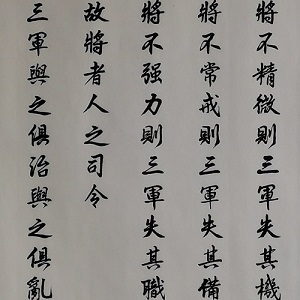在书籍《Operation and Modeling of the MOS Transistor 4th.pdf》中修正页码和增加书签
Tip
一本好书:《Operation and Modeling of the MOS Transistor》第四版
(多年之后)终于又有心情捡起我的技术老本行😄, 趁着上海疫情被封在家里又翻起器件的基础物理知识, 看paper时无意中从参考列表里看到了上面这本书,马上去找,国内好像没有实体书, 找来找去终于在欧洲一个网站上找到了第四版的扫描版, 下载下来看了一下书本身非常好, 不过pdf的页码是顺序排下来的,和原本书页的显示并不一样, 也没有书签目录,在电子设备看起来着实不方面,想着怎么弄一下。
工作环境
- 环境:WSL+Ubuntu20.04(还是习惯在Linux下操作)。
- 软件:Python3+PyPDF4;从pdf提取图像的pdfimges;做OCR的tesseract。
基本PyPDF4操作
打开原始pdf文件并将页面附加到pdf输出中
|
|
排布页码
下面这段代码主体来自于网上,主要是关于pdf格式本身我是知之甚少, PyPDF4文档中也无更多的解释,能从代码中主要学习到的有如下几点:
- 要添加进PDF中的是各种object,如NameObject、NumberObject、ArrayObject, 不能是直接的字符串或数字;
- PyPDF4中并没有提供非常详尽或者明确的方法来操作PDF,
有时候必须直接访存内部变量,如
_root_object; - 如果不熟悉PDF结构,可能压根不知道该用什么来达到目的, 由于不用科学上网,发现使用必应的搜索效果比百度好不少。
|
|
增加书签
-
本想使用PyPDF4的页面图像提取功能提取书中Content页面, 由于它不支持扫描软件常使用的JBIG2格式解码,使用时会报错, 在网上查找方案发现可以使用
pdfimages这个工具,在Ubuntu下 它是poppler-utils的一部分。注意这里使用-png定义输出 图像格式为png,缺省情况下输出图像格式和在PDF中存储的图像格式相同。1 2 3sudo apt install poppler-utils pdfimges -f first_page_num -l last_page_num -png PDF_File IMAGE_DIR/ -
Python中也有一些OCR库, 不过经过简单的搜索我选择使用
tesseract这个现在由Google维护工具, 它也可以直接在Ubuntu中安装sudo apt install tesseract-ocr tesseract-ocr-all,其中tesseract-ocr-all是各种语言的训练数据,也可以只安装指定语言的训练数据。 使用这个软件逐个处理导出的图像,并将OCR结果存入一个文本文件以备后用。1 2 3tesseract --psm4 pic00_file - | tee -a out.txt ...... tesseract --psm4 picxx_file - | tee -a out.txt -
利用文本编辑器对OCR输出的文件手工编辑, 修正一些错误并建立如下结构以便python遍历整个目录并输出到PDF文件。 修正和编辑工作颇考验文本编辑器使用水平,我作为Vimer也是颇花了一些时间的。 第2行和第9行的数字是当前这组页码的偏移量, 最内一层的元组的最后一个数字加上这个偏移量得到真正pdf从零开始的实际页码数。 这个最内层元组的头一个元素表明这个书签的父节点,第2个元素是这个书签的自身命名。
下面代码遍历上面的元组并利用1 2 3 4 5 6 7 8 9 10 11 12 13 14 15 16 17pdf_toc = ( ( -1, ( ("0", "-1", "About the Author", 6), ("0", "-2", "Contents", 9), ("0", "-3", "PREFACE", 17), ) ), ( 23, ( ("0", "1", "CHAPTER 1 Semiconductors, Junctions, and MOSFET Overview", 1), ("1", "1.1", "1.1 Introduction", 1), ...... ("0", "IND", "Index", 713), ) ) )addBookmark将书签逐个加入pdf中。注意如果父节点字符串为"0", 则是父节点为None(即是顶层节点)。1 2 3 4 5 6 7 8 9 10 11tocs = {} for offset, marks in pdf_toc: for (toc_p, toc_s, title, num) in marks: if toc_p == "0" : bm = pdfou.addBookmark(title, num+offset, bold=True) tocs[toc_s] = bm else: bf = True if "." not in toc_s else False if toc_p in tocs: bm = pdfou.addBookmark(title, num+offset, parent=tocs[toc_p], bold=bf) tocs[toc_s] = bm
增加元信息
和上面排布页码遇到的问题相同,由于不知道哪些数据是构建这些信息的, 只能通过网上搜索才能发现。
|
|
最终结果链接
调整过的pdf文件可以从百度云盘下载: Operation and Modeling of the MOS Transistor 4th 提取码:ndp5
- 原文作者:Eric Jia
- 原文链接:http://eric96may.cn/post/2022/03/Refine-Pdf-File-of-Operation-and-Modeling-of-the-MOS-Transistor-4th/
- 版权声明:© Copyright 2022 版权信息 | 本博客所有文字、图片的组织及呈现方式未经本人允许不得转载或使用,转载请联系作者获得授权。
